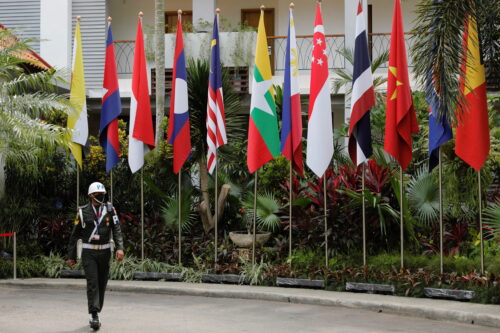
Philanthropy in China is in the middle of doing everything everywhere all at once — building a broad-based culture of charitable giving; appealing to a new generation of donors; and experimenting with the use of technology to meet these goals. These developments took decades, if not centuries, to evolve in the West. This dizzying growth means mainstream Chinese philanthropy has developed in the era of smartphones and mobile payments almost right from its start. China’s leapfrogging into tech-forward fundraising maps onto what Millennial and Gen Z donors seek in their charitable giving, and offers interesting takeaways for global practitioners.
Philanthropy is undergoing a generational shift in the U.S. With Baby Boomers expected to transfer up to $68 trillion to their children by 2045, according to Euromoney, Millennial and Gen Z donors will increasingly shape the landscape of philanthropy in coming years.
In China, philanthropy is not only going through a similar generational shift — but also a tectonic cultural shift, as the country builds a mainstream culture of philanthropy from the ground up in less than two decades. This week is 99 Giving Day, China’s biggest philanthropic event of the year over nine days in September. Earlier this week, we explored how lessons from China’s innovations in digital philanthropy on WeChat’s 99 Giving Day show how technology, gamification, and lowering barriers to entry make philanthropy appealing and accessible to Millennials and Gen Z donors (Disclosure: Tencent, which owns WeChat, is a donor to the Serica Initiative.)
Today, we look at the broader cultural and generational shifts shaping philanthropy in China, and the lessons these offer the U.S. In many ways, tech-driven innovations in Chinese philanthropy are leapfrogging past its Western counterparts. Philanthropy in China is in the middle of doing everything everywhere all at once — building a broad-based culture of charitable giving; appealing to a new generation of donors and their values; and experimenting with the use of technology to meet these goals. These are developments that took decades, if not centuries, to evolve in the West.
This means Chinese philanthropy is leapfrogging into online fundraising — and adopting a tech-forward fundraising strategy — pretty much from the very start. By contrast, legacy U.S. nonprofits must adapt time-tested fundraising methods to a new generation of donors and new tech platforms.
Today’s deep dive will provide context on just how quickly mainstream Chinese philanthropy has grown in just over a decade. We will also explore what these lessons in leapfrogging offer for U.S. practitioners, especially in appealing to Next Gen donors.
The dizzying growth of Chinese philanthropy in recent years
For most of the past century and a half, China had been a recipient — not a provider — of philanthropy abroad. In recent years, however, Chinese society has experienced a massive expansion of both extreme wealth and charitable giving, and is already proving to be a powerful tool for development.
Like the bulk of China’s economic growth over the past 40 years, the recent acceleration of Chinese philanthropic giving first gained its fuel via private ambition. With 878 billionaires according to the Hurun Rich List (up 257 from 2020), China not only has the largest number of billionaires in the world but also the highest number of millionaires engaged in environmental, social, and governance (ESG)-related investing.
The 2008 earthquake in Sichuan Province was a critical turning point in Chinese philanthropy. It prompted the first major wave of individual, broad-based charitable giving in China. Donations in China jumped to 107 billion yuan ($15.7 billion in then-dollar terms) in 2008, triple the amount from 2007. Of this total, around $11 billion went to earthquake relief efforts. Individual donations made up 54 percent of total giving that year.
Since then, charitable giving in China has grown not just in scale, but in its nature as well. In the immediate aftermath of the 2008 earthquake and in the years after, individuals in China tended to donate to urgent causes such as disaster relief efforts. In more recent years, Chinese donors, especially among Zoomers and Millennials, have become more inclined to donate to long-term causes like education and climate change.
By 2017, total giving in China has grown to $23.4 billion in 2017, with registered charitable foundations totaling over 7,000 by 2019. In 2021, 99 Giving Day donations alone reached 5 billion yuan ($735 million) in the span of a week, a 41% jump from the previous year. More than half (53%) were donations of less than 10 yuan ($1.45). Donations above RMB 1000 (US$145) made up only 1% of donations.
Looking toward Next Gen: The mainstreaming of tech-forward philanthropy in China
This dizzying growth in just over a decade means mainstream Chinese philanthropy has largely developed in the era of smartphones and mobile payments. As a result, fundraising in China has adopted a tech-forward approach almost right from its start. This maps onto what Millennial and Zoomer donors seek in their charitable giving, and offers interesting takeaways for global philanthropy practitioners.
According to Shelley Hoss of the Forbes Nonprofit Council, Next Gen donors look for: (1) accessibility of donations in their charitable giving; (2) information and transparency; and (3) hands-on involvement. To start, first-time engagement with a cause or nonprofit, Hoss writes, is “often a small step, such as liking a social media post, volunteering time or signing a petition.” China’s 99 Giving Day is an example of how an online-forward donation platform — where charities can set donation levels at as low a level as they wish due to a lack of transaction fees — makes first-time giving accessible to young donors.
Second, Next Gen donors especially want to see the direct impact and measurable results of their donations. Here, 99 Giving Day in China likewise reflects a new model of transparency. Individual donors to charities participating in 99 Giving Day — whatever their donation amount — are viewed as “board members.” While small donors in the U.S. typically only receive form updates through email or snail mail, their 99 Giving Day counterparts are entitled to attend public “board meetings” of the nonprofits to which they’ve donated (link in Chinese). These donors get the chance to speak with the nonprofit teams directly, and to ask questions about an organization’s mission, strategic plan, and operations. Many meetings take place virtually — a strategy that helps keep tech-savvy Next Gen donors who value transparency engaged.
Last, the new generation of donors like to have direct involvement with the organizations they support, rather than simply setting up a recurring donation. Here, your humble correspondent would like to share an example from the Serica Initiative’s own work. In partnership with the China Institute, Serica hosts the China Institute-Serica U.S.-China Next Gen Leaders Circle (NGLC), the only bicultural and action-based platform to connect Next Gen U.S. and Chinese leaders who are passionate about U.S.-China philanthropy and social innovation.
A main pillar is the NGLC Giving Circle: our members vote on an annual focus area for their grantmaking; solicit, interview, and select a U.S.-China nonprofit of their choice; and donate or fundraise (“give or get”) their contribution to the winner. The NGLC Giving Circle’s 2022 theme is climate. This spring, our membership community awarded nearly $20,000 to two nonprofit organizations working in U.S.-China climate collaboration. One grantee is working on river conservation in Sichuan Province, while the other using photography and the arts to inspire the two countries to cooperate on climate efforts.
“We have kept the NGLC an intimate member community so far, so we can form close relationships as we learn about U.S.-China philanthropy and social impact together,” said Jason M. Kingdon, a NGLC Founding Member and head of its membership committee. “Our scale allows our members to be very hands-on in choosing our Giving Circle theme, and in vetting and interviewing the U.S.-China nonprofits we donate to. This kind of close-up involvement is important to us.”
With reporting by Daniel Tam-Claiborne.
- Want to learn more? The Serica Initiative’s China Impact Newsletter is a deep-dive into the trends, major players, and regulatory environment for philanthropic and nonprofit activity between the U.S. and China. Subscribe to the newsletter here.






